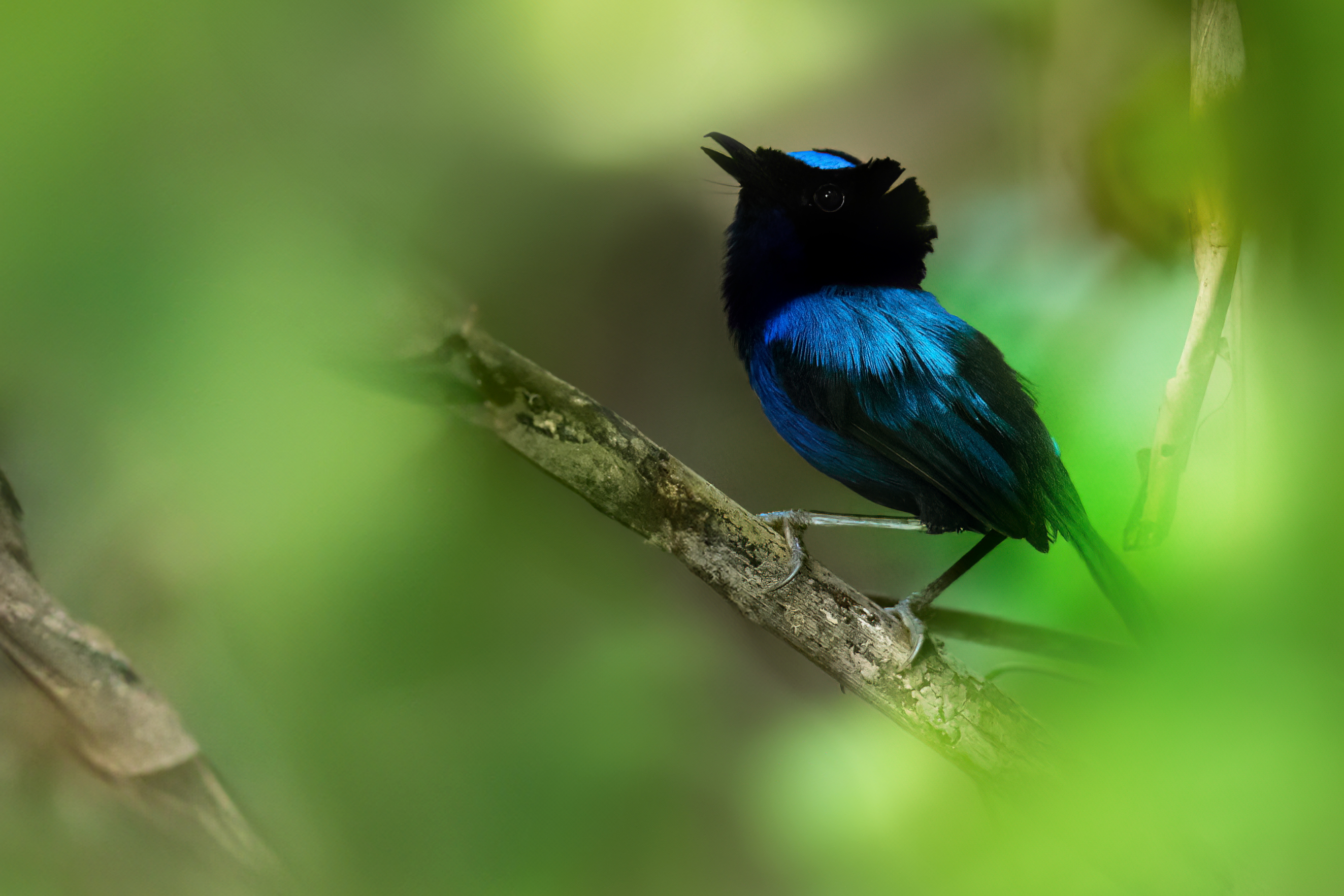|
Chenorhamphus
''Chenorhamphus'' is a genus of birds in the Australasian wren family, Maluridae. Taxonomy and systematics The species of the genus ''Chenorhamphus'' were formerly classified in the genus ''Malurus'' until a 2011 analysis of mitochondrial and nuclear DNA showed high divergence between the two taxa resulting in them being re-split into separate species. The study also found them to lie in a separate clade with the genera '' Sipodotus'' and ''Clytomyias The orange-crowned fairywren (''Clytomyias insignis'') is a species of passerine bird in the Australasian wren family, Maluridae. It is monotypic within the genus ''Clytomyias''. It is found on New Guinea in its natural habitat of subtropical or ...'' and distinct from the genus ''Malurus''. This led to the subsequent re-classification of the species into their own genus, ''Chenorhamphus''. The genus contains two species: * Broad-billed fairywren (''Chenorhamphus grayi'') * Campbell's fairywren (''Chenorhamphus campbelli'' ... [...More Info...] [...Related Items...] OR: [Wikipedia] [Google] [Baidu] |
Broad-billed Fairywren
The broad-billed fairywren (''Chenorhamphus grayi'') is a species of bird in the Australasian wren family, Maluridae. It is found in northern and north-western New Guinea. Its natural habitat is subtropical or tropical moist lowland forests. Taxonomy and systematics The broad-billed fairywren was originally described in the obsolete genus '' Todopsis''. It was formerly lumped together with Campbell's fairywren in the genus ''Malurus'' until a 2011 analysis of mitochondrial and nuclear DNA showed high divergence between the two subspecies resulting in them being re-split into separate species. The study also found them to lie in a clade with the genera '' Sipodotus'' and ''Clytomyias'' leading to their subsequent re-classification in their own genus, ''Chenorhamphus''. Alternate names for the broad-billed fairywren include broad-billed wren and broad-billed wren-warbler. Behaviour and ecology Diet Little is known about the diet of the broad-billed fairywren, although it is ... [...More Info...] [...Related Items...] OR: [Wikipedia] [Google] [Baidu] |
Campbell's Fairywren
Campbell's fairywren (''Chenorhamphus campbelli'') is a species of bird in the Australasian wren family, Maluridae. It is found in New Guinea. It is found in south-central and south-eastern New Guinea in its natural habitat of subtropical or tropical moist lowland forests. Taxonomy and systematics Formerly, this species was lumped with the broad-billed fairywren in the genus ''Malurus'' until a 2011 analysis of mitochondrial and nuclear DNA showed high divergence between the two subspecies resulting in them being re-split into separate species. The study also found them to lie in a clade with the genera '' Sipodotus'' and ''Clytomyias The orange-crowned fairywren (''Clytomyias insignis'') is a species of passerine bird in the Australasian wren family, Maluridae. It is monotypic within the genus ''Clytomyias''. It is found on New Guinea in its natural habitat of subtropical or ...'' leading to their subsequent re-classification in their own genus, ''Chenorhamphus''. The speci ... [...More Info...] [...Related Items...] OR: [Wikipedia] [Google] [Baidu] |
Australasian Wren
The Australasian wrens are a family, Maluridae, of small, insectivorous passerine birds endemic to Australia and New Guinea. While commonly known as wrens, they are unrelated to the true wrens. The family comprises 32 species (including sixteen fairywrens, three emu-wrens, and thirteen grasswrens) in six genera. Taxonomy and systematics As with many other Australian creatures, and perhaps more than most, the species making up this family were comprehensively misunderstood by early researchers. They were variously classified as Old World flycatchers, Old World warblers, and Old World babblers. In the late 1960s, morphological studies began to suggest that the Australo-Papuan fairywrens, the grasswrens, emu-wrens and two monotypic wren-like genera from New Guinea were related and, following Charles Sibley's pioneering work on egg-white proteins in the mid-1970s, Australian researchers adopted the family name Maluridae in 1975. With further morphological work and the great stride ... [...More Info...] [...Related Items...] OR: [Wikipedia] [Google] [Baidu] |
Malurus
''Malurus'' is a genus of bird in the Australasian wren family, Maluridae. Taxonomy and systematics Extant species The following table reports the English names proposed for the twelve species recognised by the listing of the International Ornithologist Committee Former species Some authorities, either presently or formerly, recognize several additional species as belonging to the genus ''Malurus'' including: * Wallace's fairywren (as ''Malurus wallacei'' and ''Malurus wallacii'') * Broad-billed fairywren (as ''Malurus grayi'') * Campbell's fairywren (as ''Malurus campbelli'') References * Del Hoyo, J.; Elliot, A. & Christie D. (editors). (2007). ''Handbook of the Birds of the World The ''Handbook of the Birds of the World'' (HBW) is a multi-volume series produced by the Spanish publishing house Lynx Edicions in partnership with BirdLife International. It is the first handbook to cover every known living species of bird. ...''. Volume 12: Picathartes to Tits ... [...More Info...] [...Related Items...] OR: [Wikipedia] [Google] [Baidu] |
Maluridae
The Australasian wrens are a family, Maluridae, of small, insectivorous passerine birds endemic to Australia and New Guinea. While commonly known as wrens, they are unrelated to the true wrens. The family comprises 32 species (including sixteen fairywrens, three emu-wrens, and thirteen grasswrens) in six genera. Taxonomy and systematics As with many other Australian creatures, and perhaps more than most, the species making up this family were comprehensively misunderstood by early researchers. They were variously classified as Old World flycatchers, Old World warblers, and Old World babblers. In the late 1960s, morphological studies began to suggest that the Australo-Papuan fairywrens, the grasswrens, emu-wrens and two monotypic wren-like genera from New Guinea were related and, following Charles Sibley's pioneering work on egg-white proteins in the mid-1970s, Australian researchers adopted the family name Maluridae in 1975. With further morphological work and the great ... [...More Info...] [...Related Items...] OR: [Wikipedia] [Google] [Baidu] |
Émile Oustalet
Jean-Frédéric Émile Oustalet (24 August 1844 – 23 October 1905) was a French zoologist who contributed greatly to ornithology. Oustalet was born at Montbéliard, in the department of Doubs (department), Doubs. He studied at the Ecole des Hautes-Etudes and his first scientific work was on the respiratory organs of dragonfly larvae. He was employed at the Muséum National d'Histoire Naturelle, where he succeeded Jules Verreaux as assistant-naturalist in 1875. In 1900 he succeeded Alphonse Milne-Edwards as Professor of Mammalogy. Oustalet became especially interested in birds after the museum received new specimens from Indo-China and Africa. He took a special interest in the birds of China and co-authored ''Les Oiseaux de la Chine'' (1877) with Armand David, and also wrote ''Les Oiseaux du Cambodge'' (1899). He described a specimen from Ilhéu Branco, Branco as a separate species ''Passer brancoensis'' in 1883, which was recognised as the subspecies ''Passer iagoensis brancoe ... [...More Info...] [...Related Items...] OR: [Wikipedia] [Google] [Baidu] |
Bird
Birds are a group of warm-blooded vertebrates constituting the class (biology), class Aves (), characterised by feathers, toothless beaked jaws, the Oviparity, laying of Eggshell, hard-shelled eggs, a high Metabolism, metabolic rate, a four-chambered heart, and a strong yet lightweight Bird skeleton, skeleton. Birds live worldwide and range in size from the bee hummingbird to the common ostrich. There are over 11,000 living species and they are split into 44 Order (biology), orders. More than half are passerine or "perching" birds. Birds have Bird wing, wings whose development varies according to species; the only known groups without wings are the extinct moa and elephant birds. Wings, which are modified forelimbs, gave birds the ability to fly, although further evolution has led to the Flightless bird, loss of flight in some birds, including ratites, penguins, and diverse endemism, endemic island species. The digestive and respiratory systems of birds are also uniquely a ... [...More Info...] [...Related Items...] OR: [Wikipedia] [Google] [Baidu] |
Clade
In biology, a clade (), also known as a Monophyly, monophyletic group or natural group, is a group of organisms that is composed of a common ancestor and all of its descendants. Clades are the fundamental unit of cladistics, a modern approach to taxonomy adopted by most biological fields. The common ancestor may be an individual, a population, or a species (extinct or Extant taxon, extant). Clades are nested, one in another, as each branch in turn splits into smaller branches. These splits reflect evolutionary history as populations diverged and evolved independently. Clades are termed ''monophyletic'' (Greek: "one clan") groups. Over the last few decades, the cladistic approach has revolutionized biological classification and revealed surprising evolutionary relationships among organisms. Increasingly, taxonomists try to avoid naming Taxon, taxa that are not clades; that is, taxa that are not Monophyly, monophyletic. Some of the relationships between organisms that the molecul ... [...More Info...] [...Related Items...] OR: [Wikipedia] [Google] [Baidu] |
Clytomyias
The orange-crowned fairywren (''Clytomyias insignis'') is a species of passerine bird in the Australasian wren family, Maluridae. It is monotypic within the genus ''Clytomyias''. It is found on New Guinea in its natural habitat of subtropical or tropical moist montane forests. Taxonomy and systematics First collected in the Arfak Mountains, the orange-crowned fairywren was described by Richard Bowdler Sharpe in 1879.Rowley & Russell, p. 199. Molecular study indicates that it forms a clade with the fairywrens of the genus '' Malurus''. Alternative names for the orange-crowned fairywren include orange-crowned wren, rufous fairywren, and rufous wren-warbler. Subspecies Two subspecies are recognised: * ''C. i. insignis'' - Sharpe, 1879: The nominate subspecies is found on the Bird's Head Peninsula in far north-western New Guinea * ''C. i. oorti'' - Rothschild & Hartert, 1907: Found in the central highlands of New Guinea from western New Guinea to the Owen Stanley Range of sout ... [...More Info...] [...Related Items...] OR: [Wikipedia] [Google] [Baidu] |
Bird Genera
Birds are a group of warm-blooded vertebrates constituting the class (biology), class Aves (), characterised by feathers, toothless beaked jaws, the Oviparity, laying of Eggshell, hard-shelled eggs, a high Metabolism, metabolic rate, a four-chambered heart, and a strong yet lightweight Bird skeleton, skeleton. Birds live worldwide and range in size from the bee hummingbird to the common ostrich. There are over 11,000 living species and they are split into 44 Order (biology), orders. More than half are passerine or "perching" birds. Birds have Bird wing, wings whose development varies according to species; the only known groups without wings are the extinct moa and elephant birds. Wings, which are modified forelimbs, gave birds the ability to fly, although further evolution has led to the Flightless bird, loss of flight in some birds, including ratites, penguins, and diverse endemism, endemic island species. The digestive and respiratory systems of birds are also uniquely a ... [...More Info...] [...Related Items...] OR: [Wikipedia] [Google] [Baidu] |



